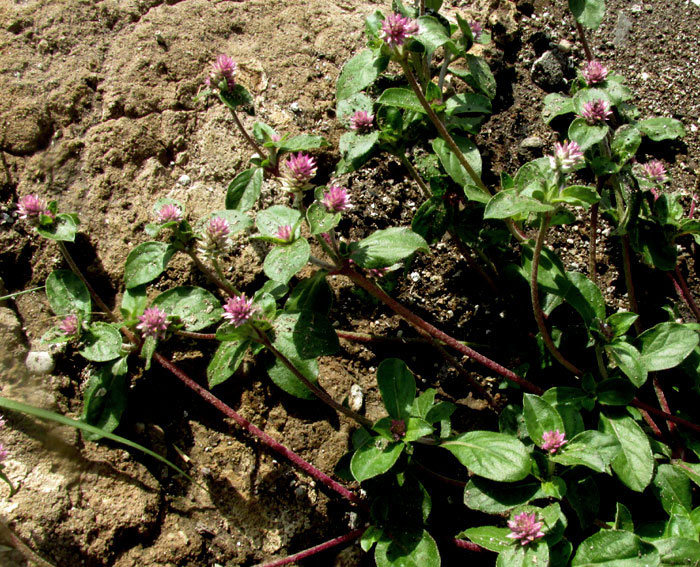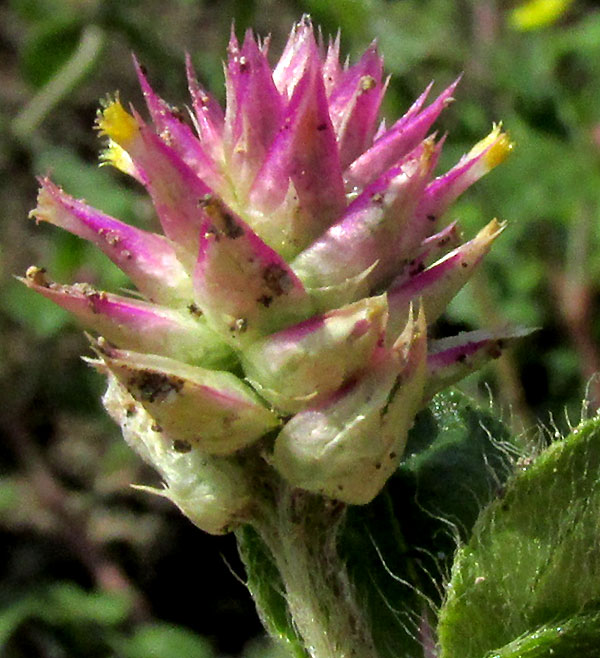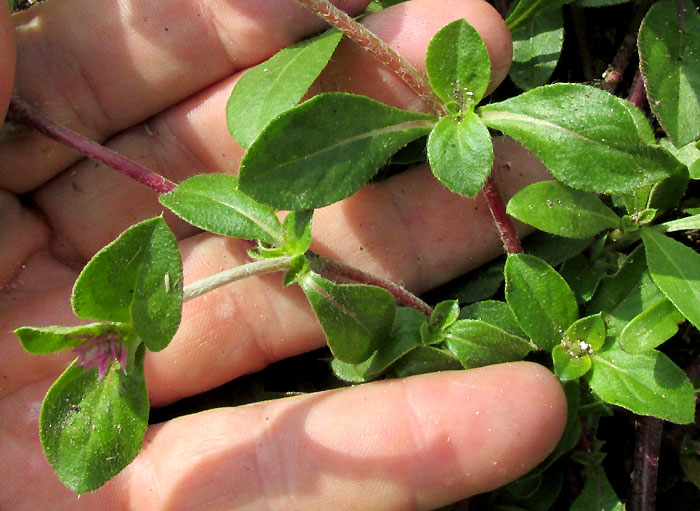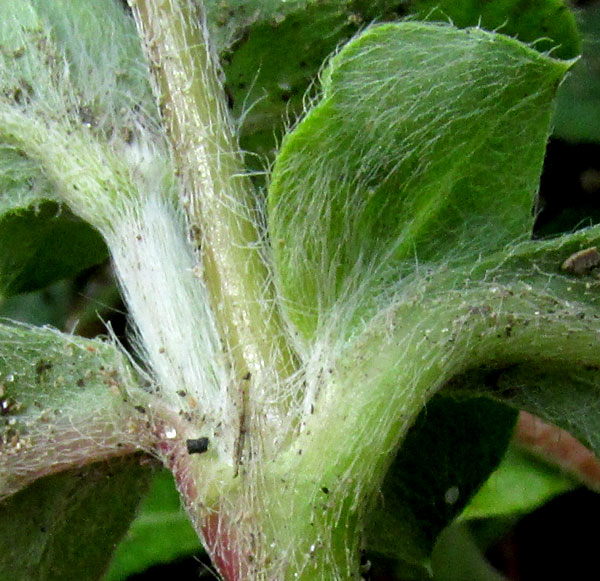Excerpts from Jim Conrad's
Naturalist Newsletter
entry dated August 31, 2022, issued from near Tequisquiapan, elevation about 1,900m (6200 ft), N20.565°, W99.890°, Querétaro state, MÉXICO
ARRASA CON TODO

At the edge of a dirt road across an abandoned field, most of the soil had eroded to bedrock composed of hard-compacted volcanic ash and ancient sediment washed from nearby hills of volcanic rhyolite. In a patch of dirt accumulated in a shallow depression, the above ground-hugging herb with its pinkish flowering heads seemed to be thriving.

The flowering heads, only about 1cm across (2/5 inch), with their flowers mostly consisting of teardrop-shaped clusters of papery, sharp-pointed, scale-like bracts, left little doubt about this being a member of the Amaranth Family, the Amaranthaceae. In the above picture, the yellow spots are the pollen-producing anthers of stamens fused along their filament margins into slender tubes. Around each mostly-covered staminal tube, the corolla and calyx of a typical flower is replaced by thin, dry, papery, rose-tinged, scale-like tepals. "Tepals" is a term used when sepals and petals are indistinguishable, in this case all papery and scale-like. Each flower in the head will produce a single utricle-type fruit. Utricles are dry, one-seeded fruits which develop from one flower with one ovary; a utricle ovary wall matures to be more or less bladdery or inflated.

Our plant's vegetative parts are hairy. Leaves arise opposite one another on stems, and are simple with no teeth on the margins and no lobes. Where tender sprouts and new leaves emerge, the protective hairiness is dense:

If you have an herbaceous member of the Amaranth Family with leaves arising opposite one another, flowers tightly clustered at stem tips in more or less spherical or short cylindrical heads, with the heads atop fairly short stems, or peduncles, immediately subtended by two broad, hairy leaves, you have the genus Gomphrena. Gomphrena species often are called globe amaranths. If you have a globe amaranth with the features noted above -- especially the plant being a hairy annual with stems sprawling on the ground, and the pinkish heads only about 1cm across, you have GOMPHRENA SERRATA.
Gomphrena serrata is native to the Americas, but has spread as an invasive weed into many tropical and subtropical countries the world over. In the US it occurs in Florida, southern Georgia and eastern Texas, often in suburban lawns. In literature published in English, usually the Spanish name is provided as the common name, which is arrasa con todo. In common Spanish usage arrasa con todo means "destroy everything" or "down with everything." At Ebay.es you can buy packages of aromatic herbs under the name arrasa con todo, meant for improving one's mood by taking fragrant baths. The package shows a dark cloud with lightning shooting from it. Curiously, Spanish literature seldom lists arrasa con todo as a name for our plant. In Spanish, many other names are used, mainly amor seco (dry love), amor de soltero (bachelor love), herba del sapo (toad plant), cabezona (bighead), and the like, all names also used for other species as well.
Our plant being native Mexican, traditional medicinal uses have been documented. The online Atlas de las Plantas de la Medicina Tradicional Mexicana reports that mainly it's used for stomach problems, including diarrhea. Boil the plant three times a day and drink the tea. Also it's used to "purify the blood" and for espanto, which is a fright of the kind that is a lingering ,vague apprehension of undefined nature. As early as the 1500s, it was reported as used to reduce fevers. Plus there are many other uses.